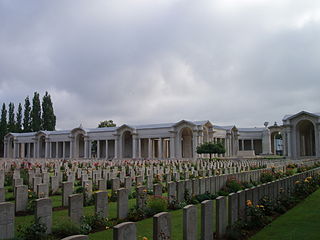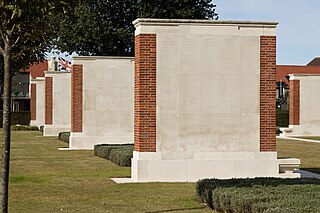
The British Commonwealth Air Training Plan (BCATP), or Empire Air Training Scheme (EATS) often referred to as simply "The Plan", was a massive joint military aircrew training program created by the United Kingdom, Canada, Australia and New Zealand, during the Second World War. BCATP remains one of the single largest aviation training programs in history and was responsible for training nearly half the pilots, navigators, bomb aimers, air gunners, wireless operators and flight engineers who served with the Royal Air Force (RAF), Royal Navy Fleet Air Arm (FAA), Royal Australian Air Force (RAAF), Royal Canadian Air Force (RCAF) and Royal New Zealand Air Force (RNZAF) during the war.

The Royal Canadian Navy is the naval force of Canada. The RCN is one of three environmental commands within the Canadian Armed Forces. As of 2023, the RCN operates 12 frigates, four attack submarines, 12 coastal defence vessels, eight patrol-class training vessels, two offshore patrol vessels, and several auxiliary vessels. The RCN consists of 8,400 Regular Force and 4,100 Primary Reserve sailors, supported by 3,800 civilians. Vice-Admiral Angus Topshee is the commander of the Royal Canadian Navy and chief of the Naval Staff.

The Tower Hill Memorial is a pair of Commonwealth War Graves Commission memorials in Trinity Square Gardens, on Tower Hill in London, England. The memorials, one for the First World War and one for the Second, commemorate civilian, merchant seafarers and fishermen who were killed as a result of enemy action and have no known grave. The first, the Mercantile Marine War Memorial, was designed by Sir Edwin Lutyens and unveiled in 1928; the second, the Merchant Seamen's Memorial, was designed by Sir Edward Maufe and unveiled in 1955. A third memorial, commemorating merchant seamen who were killed in the 1982 Falklands War, was added to the site in 2005.

The Tomb of the Unknown Soldier is a tomb situated before the National War Memorial in Confederation Square, Ottawa, Ontario. The tomb is dedicated to Canadian service members, and holds the remains of an unidentified Canadian soldier who died in France during the First World War; selected from a Commonwealth War Grave near Vimy, in the vicinity where the Battle of Vimy Ridge took place.

Green Island in Ottawa, Ontario, Canada, is an island at the junction of the Rideau River, just off Sussex Drive in Ottawa at the Rideau Falls at the confluence with the Ottawa River. It is situated near the neighbourhood of New Edinburgh.

The Royal Canadian Medical Service is a personnel branch of the Canadian Armed Forces, consisting of all members of medical occupations. Nearly all members of the RCMS, along with the members of the Royal Canadian Dental Corps (RCDC), are employed in the Canadian Forces Health Services Group, an operational formation. The RCMS was formerly designated the Canadian Forces Medical Service until it was redesignated on October 9, 2013.

The Kranji War Cemetery is located in Kranji, Singapore, and is the final resting place for Allied soldiers who perished during the Battle of Singapore and the subsequent Japanese occupation of the island from 1942 to 1945 and in other parts of Southeast Asia during World War II.

Groesbeek Canadian War Cemetery and Memorial is a Second World War Commonwealth War Graves Commission military war grave cemetery, located in the village of Groesbeek, 8 km (5.0 mi) southeast of Nijmegen in the Netherlands. Of the total 2,619 burials, the cemetery contains 2,338 Canadian soldiers. It was built to a design by Commission architect Philip Hepworth.
The relationship between the Canadian Crown and the Canadian Armed Forces is both constitutional and ceremonial, with the King of Canada being the commander-in-chief of the Canadian Forces and he and other members of the Canadian royal family holding honorary positions in various branches and regiments, embodying the historical relationship of the Crown with its armed forces. This construct stems from Canada's system of constitutional monarchy and through its 500 years of monarchical history, the relationship symbolically represented through royal symbols, such as crowns on military badges and insignia, coats of arms, royal portraits, and the grant of the royal prefix to various military units and institutions. The role of the Canadian sovereign within the Canadian Armed Forces is established within the Canadian constitution, the National Defence Act, and the King's Regulations and Orders (KR&Os) for the Canadian Forces.

Haydarpaşa Cemetery, also known as Haidar Pasha Cemetery, Istanbul,, located in the Haydarpaşa neighborhood of Üsküdar district in the Asian part of Istanbul, Turkey, is a burial ground established initially for British military personnel who took part in the Crimean War (1854–1856). The cemetery holds also graves of Commonwealth soldiers from the two World Wars, and civilians of British nationality.

The Kingdom of Iceland was occupied by the Allies during World War II, beginning with a British invasion intent on occupying and denying Iceland to Germany. The military operation, codenamed Operation Fork, was conducted by the Royal Navy and Royal Marines. In time, some of the British garrison was replaced by Canadian and later American forces, despite the fact that the United States was not yet in the war.

Canadian war memorials are buildings, monuments, and statues that commemorate the armed actions in the territory encompassing modern Canada, the role of the Canadian military in conflicts and peacekeeping operations, and Canadians who died or were injured in a war. Much of this military history of Canada is commemorated today with memorials across the country and around the world. Canadian memorials commemorate the sacrifices made as early as the Seven Years' War to the modern day War on Terror. As Newfoundland was a British Dominion until joining Confederation in 1949, there are several monuments in Newfoundland and Labrador and abroad which were dedicated to Newfoundland servicemen and women.

The Malta Memorial is a war memorial monument to the 2,298 Commonwealth aircrew who lost their lives in the various Second World War air battles and engagements around the Mediterranean, whilst serving with the Commonwealth Air Forces flying from bases in Austria, Italy, Sicily, islands of the Adriatic and Mediterranean, Malta, Tunisia, Algeria, Morocco, West Africa, Yugoslavia and Gibraltar, and who have no known grave.

The Bayeux War Cemetery is the largest Second World War cemetery of Commonwealth soldiers in France, located in Bayeux, Normandy. The cemetery contains 4,648 burials, mostly of the Invasion of Normandy. Opposite this cemetery stands the Bayeux Memorial which commemorates more than 1,800 casualties of the Commonwealth forces who died in Normandy and have no known grave.

The Arras Memorial is a World War I memorial in France, located in the Faubourg d'Amiens British Cemetery, in the western part of the town of Arras. The memorial commemorates 35,942 soldiers of the forces of the United Kingdom, South Africa and New Zealand, with no known grave, who died in the Arras sector between the spring of 1916 and 7 August 1918.

Beechwood Cemetery is the national cemetery of Canada, located in Vanier, Ottawa, Ontario. Over 82,000 Canadians from all walks of life are buried in the cemetery, including Governor General Ramon Hnatyshyn, Prime Minister Robert Borden, and several members of Parliament, premiers, Canadian Armed Forces personnel and veterans, Royal Canadian Mounted Police personnel, Canadian Security Intelligence Service intelligence officers, and Hockey Hall of Famers, alongside other notable Canadians. In addition to being Canada's national cemetery, it is also the national military cemetery of Canada and the national memorial cemetery of the RCMP.

The Arras Flying Services Memorial Commonwealth War Graves Commission war memorial in the Faubourg d'Amiens Cemetery, Arras, France. The memorial commemorates nearly 1,000 airmen from forces of the Commonwealth who were killed on the Western Front during World War I and who have no known grave. The memorial was designed by Edwin Lutyens, sculpted by William Reid Dick and unveiled by Hugh Trenchard, 1st Viscount Trenchard, Marshal of the Royal Air Force on 31 July 1932.

The Dunkirk Memorial is a Commonwealth War Graves Commission memorial to the missing that commemorates 4,505 missing dead of the British Expeditionary Force (BEF), most of whom fell prior to and during the Battle of Dunkirk in 1939 and 1940, in the fall of France during the Second World War.

The Delhi War Cemetery, in the Delhi Cantonment, Delhi, India, is the site of the graves of 1,154 service personnel who served the British Empire during the First and Second World Wars. The cemetery was established in 1951 to ensure the permanent preservation of the remains of soldiers across various cemeteries in northern India.


















